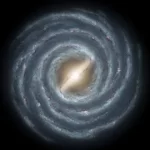Key Takeaways:
- Astronomers explore a novel “shifting and stacking” technique to potentially discover Planet Nine, a speculated planet beyond Pluto’s orbit.
- This strategy involves manipulating space-telescope images along potential orbital paths and combining them to detect extremely faint objects.
- Malena Rice and Greg Laughlin of Yale University tested this method using NASA’s TESS, uncovering signals of known trans-Neptunian objects (TNOs) and identifying 17 potential new TNO candidates.
- These findings offer promising clues to understand the outer solar system’s dynamics and the characteristics of Planet Nine, if confirmed.
- Debate persists among scientists regarding the cause of TNOs’ peculiar orbits, with some attributing it to the gravitational effects of multiple small neighbors rather than a single large object.
Astronomers are delving into a pioneering technique in the quest to unveil the elusive Planet Nine, contemplating a method that may revolutionize the way we scan telescope images. With the speculated existence of a mysterious planet lurking far beyond Pluto, researchers are exploring the “shifting and stacking” approach, envisioning it as a potential breakthrough in uncovering this enigmatic celestial body.
The ingenious strategy involves a meticulous manipulation of space-telescope images along various potential orbital pathways. Subsequently, these adjusted images are amalgamated or “stacked” together to enhance their collective light.
This innovative technique, previously successful in discovering moons within our solar system, holds the promise of unmasking Planet Nine, known variably as Planet X, Giant Planet Five, or Planet Next, along with other exceedingly distant objects, according to researchers.
In the pursuit of this method, Malena Rice, a doctoral student in astronomy at Yale University, emphasized its necessity. “You really can’t see them without using this kind of method,” she stated, underscoring the incredibly faint nature of a potential Planet Nine. Collaborating with Greg Laughlin, an astronomy professor at Yale, Rice spearheaded a study implementing this technique. Their approach involved manipulating images from NASA’s Transiting Exoplanet Survey Satellite (TESS), designed to seek out alien worlds from its Earth orbit.
In a pivotal trial, these researchers discerned faint signals originating from three recognized trans-Neptunian objects (TNOs) within the shifted and stacked TESS images.
Encouraged by this success, they conducted a blind exploration of two remote sky regions, unearthing a promising tally of 17 fresh TNO candidates. Rice expressed the significance of these findings, stating, “It’s compelling new information,” while acknowledging the potential implications for comprehending the outer solar system dynamics and the hypothetical Planet Nine’s attributes, should these candidates prove valid.
The meticulous process of confirmation now ensues, as the researchers aim to validate the 17 candidate TNOs utilizing imagery obtained from ground-based telescopes.
These TNOs, often regarded as celestial breadcrumbs, are perceived as potential guiding markers that could lead the way to the discovery of Planet Nine. The inferred existence of this enigmatic world stems from the peculiar orbits of certain TNOs, deemed to be clustered in a manner hinting at sculpting by a distant, massive “perturber.” This theoretical planet, estimated to be five to ten times more massive than Earth, allegedly orbits the sun hundreds of times farther than our home planet does.
However, dissent prevails within the scientific community regarding this interpretation. Some scholars refute the theory, proposing instead that the peculiar orbits of TNOs result from the collective gravitational influence exerted by numerous minuscule neighboring objects, rather than the presence of a singular massive entity.
The significant findings of this new study, accepted by The Planetary Science Journal, were unveiled by Rice at the annual meeting of the American Astronomical Society’s Division for Planetary Sciences. This presentation, held virtually, marked a pivotal moment in the ongoing quest to decipher the mysteries of our solar system’s farthest reaches and the potential existence of the elusive Planet Nine.


